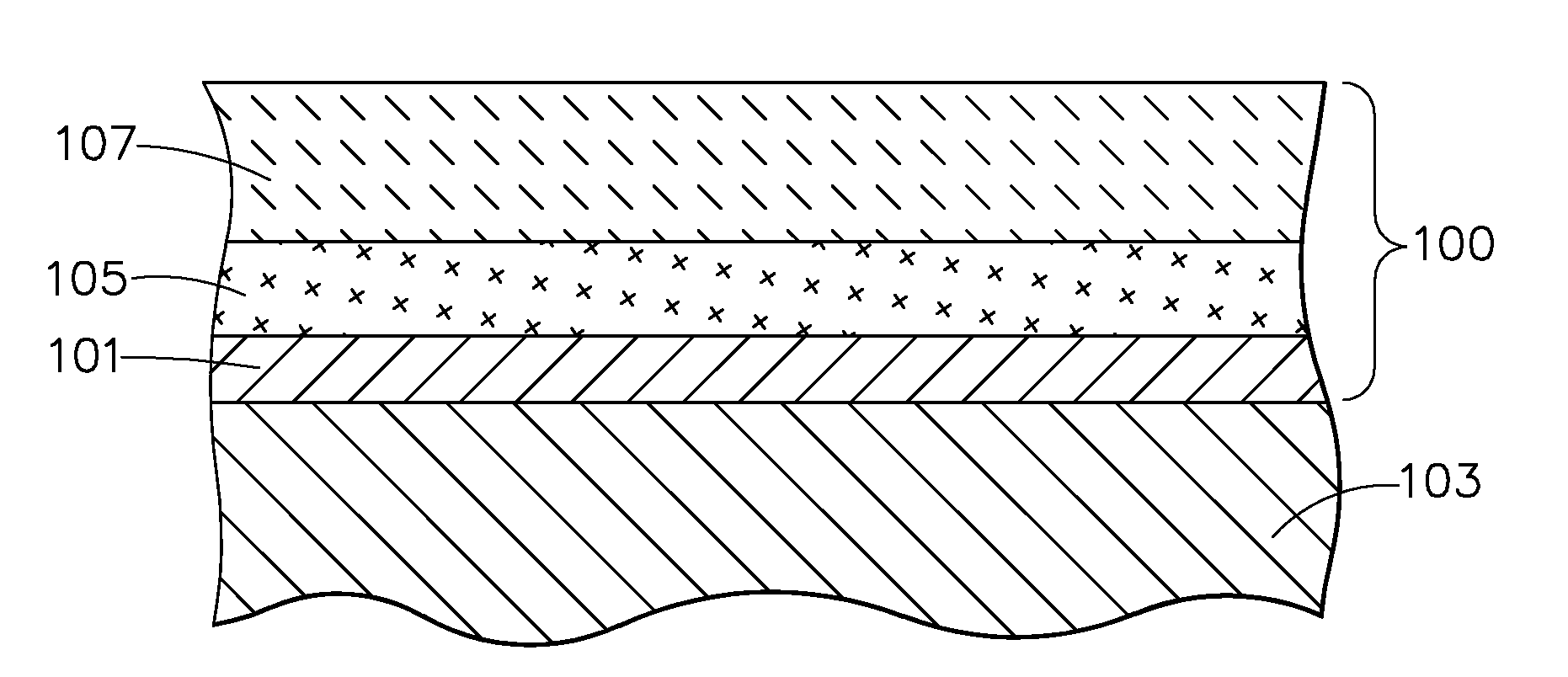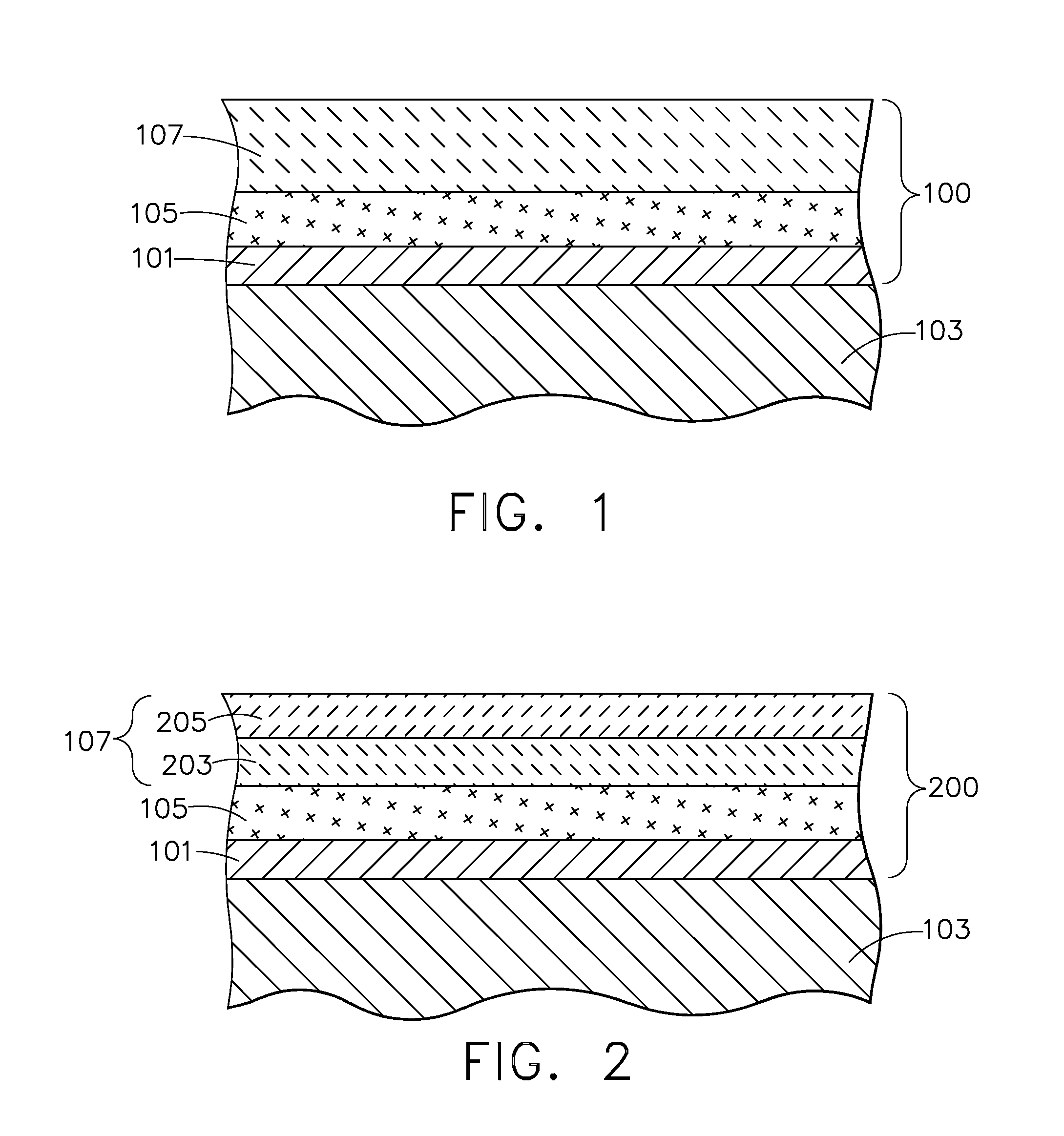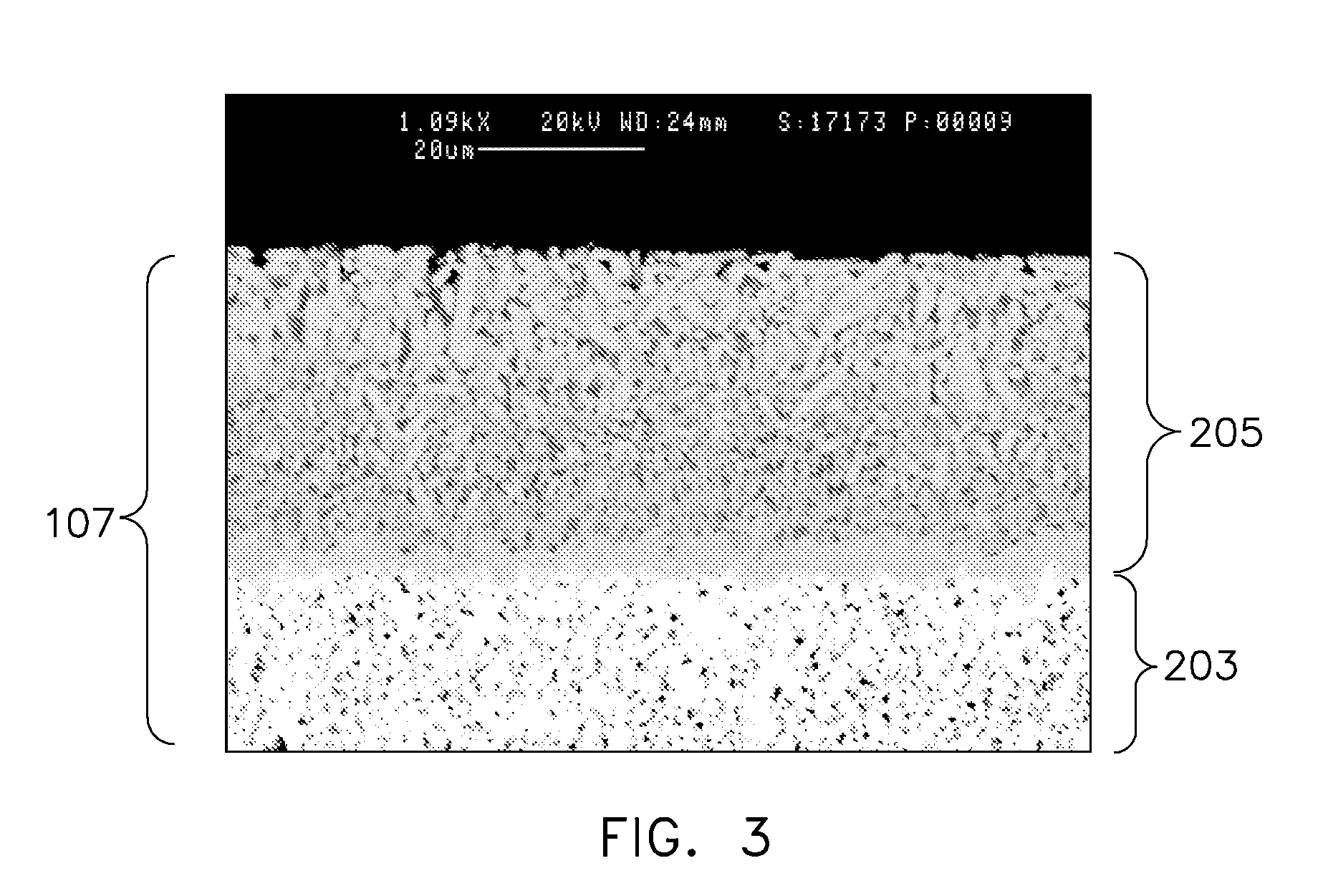Yttria containing thermal barrier coating topcoat layer and method for applying the coating layer
a thermal barrier coating and yttria technology, applied in the direction of wind motor components, liquid fuel engine components, non-positive displacement fluid engines, etc., can solve the problems of foreign object damage, tbc coated hot section engine components are susceptible to various modes of damage, and the thermal conductivity of tbcs formed by these methods is generally lower than a dense ceramic, so as to reduce or eliminate the infiltration of cmas and increase the life of gas turbine engine components
- Summary
- Abstract
- Description
- Claims
- Application Information
AI Technical Summary
Benefits of technology
Problems solved by technology
Method used
Image
Examples
Embodiment Construction
[0021]The present invention is generally applicable to components subjected to high temperatures, and particularly to components such as the high pressure and low pressure turbine vanes (nozzles) and blades (buckets), shrouds, combustor liners and augmentor hardware of gas turbine engines. The invention provides a thermal barrier coating (TBC) system suitable for protecting those surfaces of a gas turbine engine component that are subjected to hot combustion gases. While the advantages of this invention will be described with reference to gas turbine engine components, the teachings of the invention are generally applicable to any component on which a TBC may be used to protect the component from a high temperature environment, particularly environments containing CMAS.
[0022]Coating systems in accordance with exemplary embodiments of this invention are represented in FIGS. 1 and 2. In each embodiment, the coating system 100 is shown as including a metallic bond coat layer 101 that o...
PUM
| Property | Measurement | Unit |
|---|---|---|
| Concentration | aaaaa | aaaaa |
Abstract
Description
Claims
Application Information
 Login to View More
Login to View More - R&D
- Intellectual Property
- Life Sciences
- Materials
- Tech Scout
- Unparalleled Data Quality
- Higher Quality Content
- 60% Fewer Hallucinations
Browse by: Latest US Patents, China's latest patents, Technical Efficacy Thesaurus, Application Domain, Technology Topic, Popular Technical Reports.
© 2025 PatSnap. All rights reserved.Legal|Privacy policy|Modern Slavery Act Transparency Statement|Sitemap|About US| Contact US: help@patsnap.com



